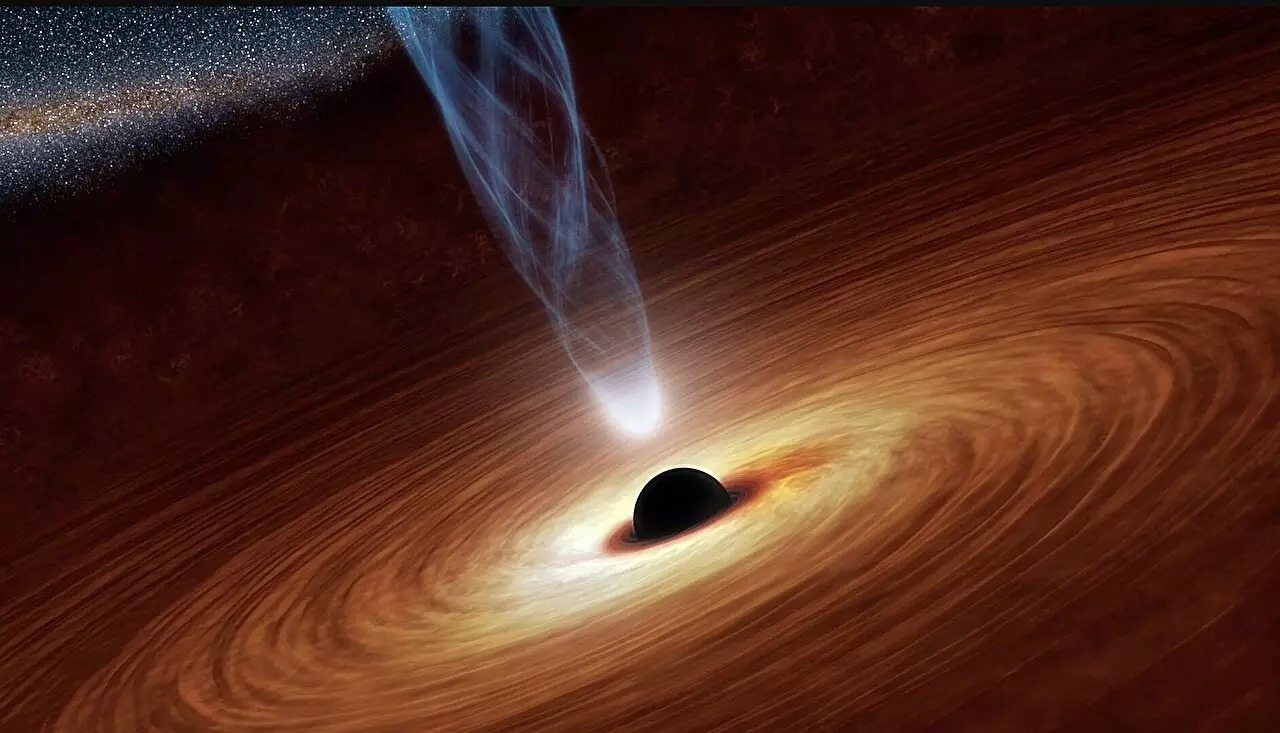Black holes have long captivated the attention and imagination of scientists and researchers. These cosmic wonders, characterized by their immensely powerful gravitational forces, have remained enigmatic and mysterious. They serve as important subjects for numerous research undertakings, shedding light on various aspects of the universe. Extremal Kerr black holes, a specific class of black holes, have recently become the focus of a theoretical study conducted by researchers from the University of California-Santa Barbara, the University of Warsaw, and the University of Cambridge.
The researchers’ investigation, published in Physical Review Letters, reveals that extremal Kerr black holes possess unique characteristics that make them potential amplifiers of unknown physics. The initial inspiration for this study originated during a visit to UC Santa Barbara, where Maciej Kolanowski engaged in discussions about extremal black holes with Gary Horowitz from UCSB and Jorge Santos from Cambridge. Through their collaboration, the researchers discovered that the appearance of extremal black holes differed significantly from previous assumptions.
In a previous paper, Kolanowski, Horowitz, and Santos established that extremal black holes subjected to a cosmological constant experienced infinite tidal forces. This meant that any living being drawn towards the black hole would be crushed by gravity even before nearing its center. However, the researchers’ current study proposes that if the cosmological constant is zero, which is often assumed in astrophysical scenarios, this specific effect disappears. This finding sparked further inquiry into whether additional effects could account for the observed phenomena.
Inspired by the possibility of alternative explanations, Grant Remmen began brainstorming with Gary Horowitz about the potential contributions of additional factors to the presence of singularities on the horizons of extreme black holes. Combining their research expertise in effective field theories (EFTs) and quantum corrections, Remmen and Horowitz embarked on a collaborative endeavor with Kolanowski and Santos to test their hypothesis. Their calculations assessed the impact of higher-derivative terms, representing quantum corrections, on the horizons of rapidly spinning black holes.
Extremal black holes rotate at the maximum possible rate, with the horizon moving at the speed of light. The researchers’ calculations demonstrate that higher-derivative EFT corrections make the horizons of extremal black holes singular, generating infinite tidal forces. This noteworthy observation contrasts typical black holes, where tidal forces only become infinite at the center. The presence of “higher-derivative terms” is regulated by the coefficients in the Einstein equations associated with the couplings and particle types at high energies and short distances, making them sensitive to new physics.
Kolanowski, Horowitz, Remmen, and Santos made another significant finding: the strength of the tidal divergence at the horizon and the possible occurrence of tidal singularities depend heavily on the EFT coefficients. This suggests that the spacetime geometry near the horizons of extremal black holes is susceptible to new physics at higher energies. The surprising aspect of their results lies in the fact that the Standard Model of particle physics generates the values of these EFT coefficients, implying that the low-energy description of physics might break down in unexpected situations.
The calculations conducted by this team of researchers highlight the potential of extremal Kerr black holes for unraveling new physical phenomena. Although the horizons of these black holes can have significant size, the expectation was not for them to possess infinitely large curvatures. However, the researchers’ findings reveal that indeed they do. Moving forward, the researchers are eager to explore whether these singularities can be resolved with the help of ultraviolet physics. The pressing question remains whether the horizon’s sensitivity to new physics persists all the way to the Planck scale or whether it smooths out at the EFT’s associated short-distance scale.
The study of extremal Kerr black holes has opened up exciting new possibilities for discovering and understanding unknown physics. The unique characteristics of these black holes, as identified by the researchers, serve as potential amplifiers of new phenomena. With further exploration and investigation, this research could pave the way for groundbreaking discoveries in the field of astrophysics and beyond.


Leave a Reply